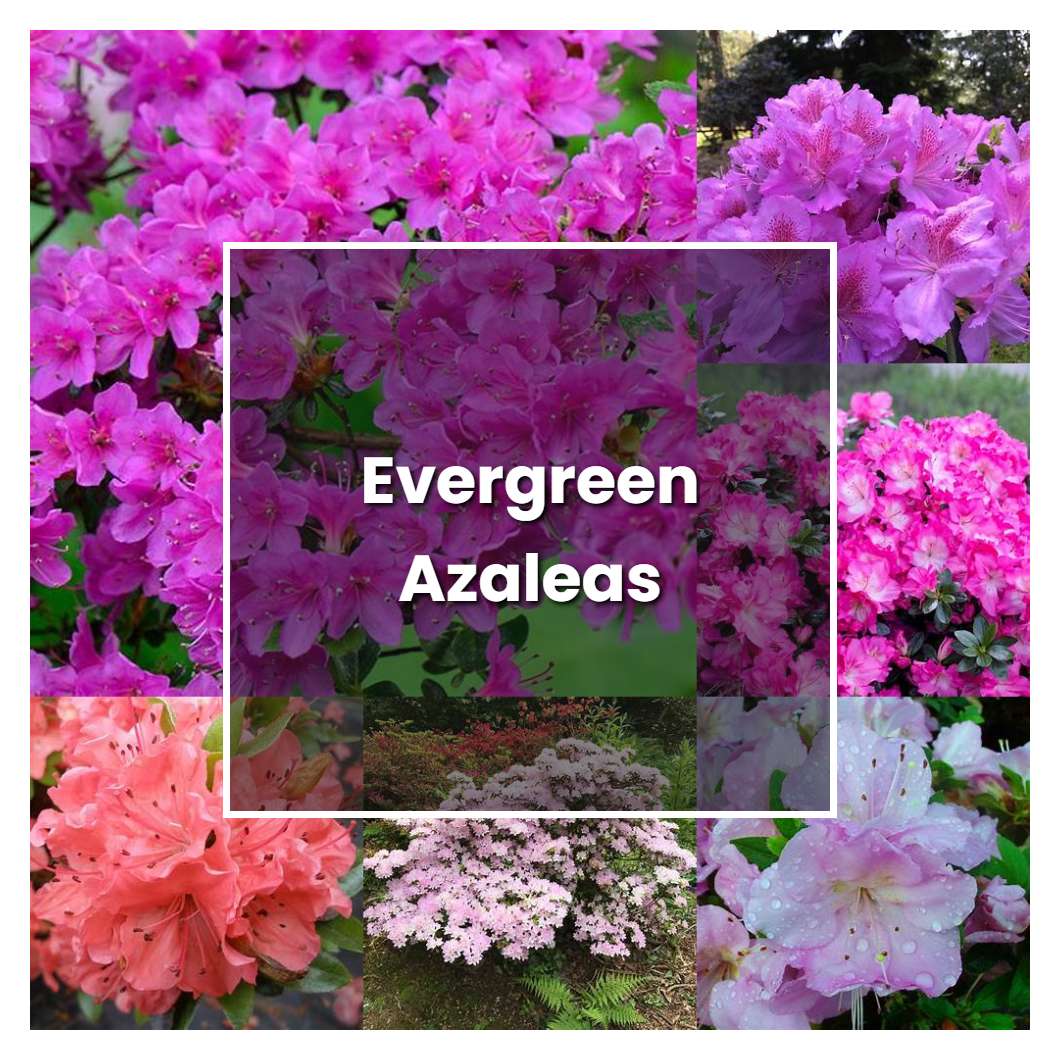Evergreen azaleas is a plant that is native to the mountainous regions of East Asia. The plant has glossy green leaves and produces delicate white or pink flowers. The evergreen azaleas is a popular ornamental plant and is often used in landscaping.

Related plant:
Best Evergreen Shrubs
Related plant:
Tall Evergreen Shrubs
About soil condition, Evergreen azaleas need well-drained, slightly acidic soil with a pH of 5.5 to 6.5. If your soil is too alkaline, you can lower the pH by adding sulfur or aluminum sulfate. You can improve heavy clay soils by adding organic matter such as compost, pine needles, or bark.
Similar to other types of azaleas, evergreen azaleas need full sun to partial shade to thrive. The amount of sun each plant needs depends on the variety; some can handle more sun than others. too much sun can scorch the leaves, so it's important to know how much your plant can take. When in doubt, err on the side of too little sun rather than too much.
The temperature condition that is best for evergreen azaleas is cool to cold weather. They can tolerate some heat, but they prefer cooler temperatures. Azaleas can handle different types of light, but they prefer filtered sunlight or partial shade.
Ideal humidity condition for this plant is 50%. However, they can tolerate lower humidity as long as they are not in direct sunlight. If the humidity drops below 30%, the leaves will start to turn brown and fall off.
For the fertilizer, this type of plant does best with an acidic fertilizer. Because of their shallow root systems, evergreen azaleas need to be fertilized more frequently than other types of plants. It is best to fertilize them every two to four weeks during the growing season.
Pruning is an important part of caring for evergreen azaleas. dead branches should be removed and the plant should be shaped to maintain its natural form. Azaleas can be pruned in late winter or early spring.
Propagation is typically done through rooting stem cuttings, which is a straightforward process. Cuttings should be taken from new growth that is still soft and flexible. Cuttings should be about 4-6 inches long, and the bottom 2 inches should be placed in a rooting hormone. The hormone helps to encourage root growth. The cuttings should then be planted in a well-draining potting mix and placed in a bright, indirect light. Water the cutting when the soil begins to dry out. Roots should form within 4-8 weeks.
Usually, the plant growth rate is slow to moderate. Some varieties however can grow quite rapidly. The fastest growers include the hybrid Hinodegiri, which can add 3 feet or more a year, and the species R. oldhamii, which can add up to 2 feet a year.
Common problems for this kind of plant are usually associated with the roots. The roots may be too dry or too wet, which can lead to the plant dying. If the roots are too wet, the plant may develop root rot, which can kill the plant. If the roots are too dry, the plant may not be able to absorb enough water and nutrients, which can also lead to the plant dying.
Source:
Evergreen azalea | Yale Nature Walk
Evergreen Azalea (Rhododendron species - Virginia Tech
Evergreen Azalea (Rhododendron species) - Virginia Tech
